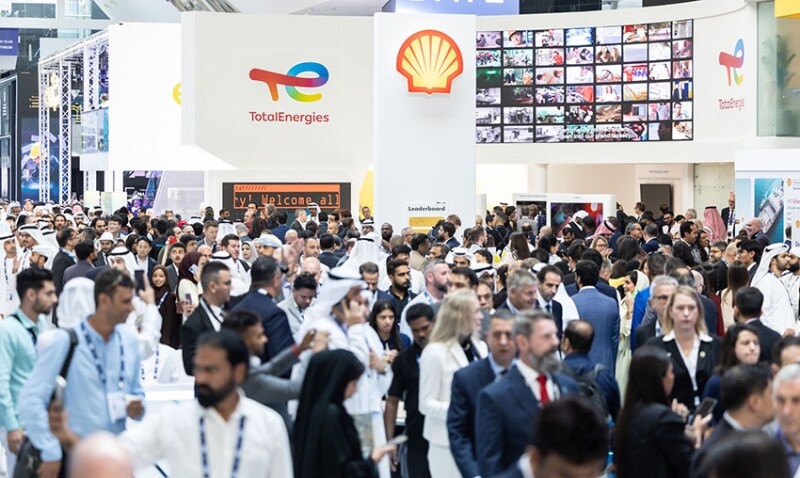Over the past 12 months, JPT has celebrated its 75-year anniversary through an anthology of articles highlighting the publication’s long legacy of sharing industry knowledge.
Contributions from current and former editors, along with long-time collaborators, provided unique perspectives on the ideas and innovators that have shaped SPE’s flagship publication since its launch in 1949. We encourage you to check out the collection here.
As this retrospective series draws to a close, we will sharpen our focus once again on what the future holds for the industry. But first, it’s worth quickly revisiting a period that JPT chronicled extensively in the latter half of the past decade—just before the energy transition became the upstream sector’s top talking point.
At that time, the industry was nearly overflowing with excitement about digital transformation and conquering the big data challenge. Large operators moved quickly to hire data scientists, form analytics teams, and partner with emerging software providers offering machine learning platforms with sleek, user-friendly interfaces.
JPT spotlighted startups developing chatbots and “cognitive” programs designed to help petroleum engineers retrieve critical production data or predict issues like sand production in wells.
Some of the would-be disruptors delivered on their promises, while many pivoted to less-complex industries or faded away. Yet, despite the mixed bag of outcomes, their combined vision for artificial intelligence (AI) in oil and gas looks remarkably prescient, even if slightly ahead of its time.
We are now once again swimming in industry optimism thanks to the rapid commercial success of large language models which have unlocked the productivity-boosting power of generative AI.
The momentum of this shift was impossible to ignore at the recent Abu Dhabi International Petroleum Exhibition and Conference (ADIPEC) in the UAE’s capital, where the SPE served as the technical program organizer.
Held over 4 days in November, the 40th edition of this annual event saw more than 205,000 pass through the doors. Event officials declared it a record-breaking crowd for an upstream conference—a milestone that underscores the relevance and resilience of in-person gatherings in a post-pandemic world.
Beyond an unprecedented number of human participants, ADIPEC may have also set a new bar for non-sentient ones. Competing for space across the sprawling exhibition was a parade of four‑legged robots, multipurpose drones, virtual reality headset demos, and holographic presenters—apparently based on real people and those digitally created.
For seasoned industry conferencegoers, the sight of most of this gadgetry was nothing new, but its abundance likely was.
ADIPEC also distinguished itself further as likely becoming the first upstream conference to feature a flying taxi, the recently debuted Tesla Cybertruck, and even a prototype of the electric carmaker’s yet-to-be-released humanoid Tesla Bot—albeit a lifeless, stationary one.

But perhaps the most notable harbinger of things to come was hidden inside a 6-ft-tall server rack showcased on the floor by AIQ—a technology joint venture between the Abu Dhabi National Oil Company (ADNOC) and Abu Dhabi-based tech firm Presight.
Bathed in a purple glow, the silent glass and metal box contained many of the powerful chips that serve as the backbone of the data centers enabling today’s AI resurgence.
Now, a lone server rack at an oil and gas conference won’t settle the debate over AI’s ability to redefine the future of petroleum engineering. And if you’re a keen observer of upstream tech trends, you might be tempted to dismiss the current wave of AI as just another turn in the hype cycle that swept through the industry a few years ago—a cycle that, despite its ambitions, didn’t fundamentally transform the business.
But if the blistering pace of adoption we are witnessing today is any measure at all, this moment feels undeniably significant.
The day before publication of this article marked 2 years since OpenAI’s commercial debut of ChatGPT. Since then, many of the largest oil companies around the world have moved well beyond the decision to adopt generative AI at enterprise level (many via Microsoft’s ChatGPT-based Copilot) and are now focused on scaling its use at the operational level—where the real value is to be created.
There is also a big external driver that has many within the business taking note of AI’s immediate impact. At ADIPEC, leaders of some of the world’s top producers said the expanding uptake of AI across industries is surpassing their expectations and driving upward revisions in future energy demand forecasts.
In his opening remarks at the conference, ADNOC Group CEO Sultan Ahmed Al Jaber highlighted the energy demands of AI, noting that a single ChatGPT prompt consumes 10 times more energy than a standard Google search. While acknowledging its transformative potential, he remarked, “The exponential growth of AI is also creating a power surge that no one anticipated 18 months ago.”
Others speaking in Abu Dhabi last month cited projections that the capacity of the world’s data centers will double within 6 years, requiring at least 150 GW of new capacity by 2030. From there, demand is expected to double again by 2040. Renewables will play a role in answering the call, as will many new natural gas-fired power plants.
Tengku Muhammad Taufik, CEO of Malaysia’s Petronas, addressed the new trajectory of global energy demand because of AI, saying he, along with his executive team, is “slowly waking up to the fact that we may have grossly underestimated the actual gradient within the next 4 or 5 years.”
The new forecasts are surprising BP CEO Murray Auchincloss too. Using the US as an example, where AI infrastructure buildout is booming, he said demand showed signs of leveling off during the pandemic years, but “now every month that I review it with the team we see another tick up, another percentage point up in energy demand growth.”
The BP chief added that the trend is also evident in India and China and that it will soon be felt in a few other countries.

ADNOC Goes All In on AI
As the host of the annual conference, ADNOC took center stage by sponsoring an AI-themed exhibition hall teeming with many of the latest emerging technologies mentioned above. But the company also used the event to show that it is putting its money where its mouth is when it comes to earning a role as an early adopter of advanced AI.
The company announced at ADIPEC a $920-million contract with Middle East engineering firm Jereh Oil and Gas to equip more than 2,000 onshore wells across the UAE with AI-enabled remote controls, a digitization project set to be completed by 2027.
ADNOC CEO Al Jaber, who also serves as the UAE minister of industry and advanced technology, confidently told attendees that AI is “one of those era-defining breakthroughs that is changing the pace of change itself.”
He shared his belief that AI may soon handle half of the tasks currently performed by the average human while unveiling ADNOC’s plan to become the first oil and gas producer to rely on custom-built agentic AI.
This initiative, developed in partnership with software firms AIQ, Microsoft, and G42, aims to merge machine learning models with generative AI. Their aim is to build advanced “agents” capable of working with various programs, including other agents, to perform a wide range of tasks with minimal or no human oversight.
“It will not only analyze petabytes of data, but will proactively and autonomously identify operational improvements. It will perceive, think, learn, and act,” Al Jaber said of the program, dubbed ENERGYai.
ADNOC plans to begin testing ENERGYai on real-world data before the end of the year. The program’s ambitious targets include reducing seismic survey timelines from months to days, cutting geological model delivery times by 75%, and boosting production forecast accuracy by up to 90%.
To get ready for this new paradigm, ADNOC has carried out an expansive training program that has so far taught more than 30,000 employees about the foundational aspects of AI. A smaller group of about 5,000 employees have been tapped to go a step further by receiving specialized training on how best to interact with generative AI platforms, a new human skillset called prompt engineering.
Although still in its early stages, one of ADNOC’s generative AI rollouts has already turned some heads within the company by increasing field operator productivity by 20%. Detailed in a paper presented at ADIPEC, SPE 222046 speaks to a generative AI tool that helps field maintenance teams by suggesting how to fix equipment based on manuals, historical events, and real-time data.
AI Adoption Across the Gulf
ADNOC is of course not the only oil and gas company in the region boasting of its embrace of this new breed of AI.
In neighboring Saudi Arabia, the national oil company has been developing a generative AI platform called Metabrain AI that it unveiled earlier this year.
At ADIPEC, the company revealed that one of the tasks the platform has been successful in is optimizing complex drilling rig movements across the Kingdom. Ashraf Al Tahini, vice president of the upstream digital center at Aramco, said during the conference that generative AI has also been integrated into daily drilling reports as part of this deployment.
Across the Gulf, the Kuwait Oil Company has been leveraging its own ChatGPT-like programs to predict and manage production from wells with high water cuts. According to Adel Al-Azmi, manager of the corporate information technology group for the company, this application has been translated into a daily revenue savings of about $400,000.
Declaring the value of generative AI to be proven, he explained that water-cut analysis, which once took engineers several days, has become significantly more efficient. “Now we can achieve a decision within minutes on which oil wells to shut down and how to route our production lines,” said Al-Azmi.
The Kuwaiti technology executive added that the national oil company has been using generative AI for about a year to analyze well logs, achieving a 90 to 95% improvement in catching inaccurate anomalies in the data as compared with the traditional manual method.

Beyond the Middle East
Another key participant at ADIPEC, Occidental Petroleum, has launched its own “AI Academy,” a training program accessible to employees across the organization.
The Houston-based oil company has recently adopted its first AI policies and established a dedicated AI department, led by a chief of AI. Now, just like geosciences or human resources, AI is firmly embedded in the firm’s organizational structure.
Oxy also shared at the conference that part of this drive included forming a task force of handpicked employees who identified 180 potential use cases for generative AI across its business.
The wide breadth of applications being explored is, indeed, becoming almost overwhelming.
At this year’s ADIPEC, more than a dozen papers—authored by groups from the Middle East, the US, France, Brazil, Pakistan, and Italy—demonstrated the versatility of generative AI across a wide range of upstream applications.
They included real-time drilling optimization, oil spill detection, simulation of reservoir- and pore-scale fluid dynamics, supply chain contract analysis, worker training, and seismic data interpretation.
Authored by specialists with SLB in France, SPE 221862 outlines the creation of what the firm says is a first-of-its-kind tool that uses generative AI to analyze complex drilling databases but that could also be applied to most wellbore domains.
“With minimal to no training, drilling engineers can now extract critical decision-making information within seconds. Tasks that previously required software engineers’ weeks to implement can now be executed instantaneously, allowing for faster and more customized data access for end users,” the authors wrote.
Is AI Too Good Now?
One discussion that is certain to continue is how to persuade people to adopt generative AI at the scale envisioned by developers and business leaders.
With executives openly acknowledging that AI could take over tasks currently handled by skilled professionals, concerns about job security are understandably front and center. And if you think it’s too early in the cycle to worry about this issue, think again.
Paul Madero, senior vice president of production solutions at Baker Hughes, shared insights at ADIPEC from an internal study that initially showed generative AI had great potential, only for the return on investment to come back lower than managers had expected.
Upon investigation, a reason for the discrepancy became clear.
“There was a hesitancy from the team to say how much productivity was created [using AI] because they wanted to know what’s going to happen” to their roles after the test, Madero explained.
Baker Hughes learned from the exercise that it is essential to incentivize employees to use AI while reassuring them that it is meant to assist with routine tasks while enabling them to focus on more-complex challenges.
A key takeaway from business leaders in Abu Dhabi—something seldom emphasized 5 to 10 years ago—is that it’s not just organizations, but also rank-and-file employees that risk falling behind if they turn their backs on AI at this stage.
Khaled Al Blooshi, ADNOC’s vice president for digital projects and innovation, illustrated this point with a personal anecdote about his children convincing him to pay for a ChatGPT subscription to help with their homework.
“I had to help them—I had to be a good father,” he joked, before striking a more serious note. “If the younger generation is taking this for granted as a tool to assist them in their simplest homework tasks, you can imagine that as they join the workforce, they will be demanding that these tools be available.”
For those in the workforce who fear AI might replace their jobs, a growing counterargument suggests that some roles—perhaps even their own—could become obsolete or simply seen as too unproductive without AI. As Al Blooshi cautioned, employees in key positions who resist this shift risk being considered “outdated and they are displaced with more-competent engineers who are able to commit to AI.”
For Further Reading
SPE 221862 Empowering Drilling and Optimization With Generative AI by M. Amour, B. Kent Rachmat, A. Soriano Rementeria, V. Guillot, and E. Millan, SLB.
SPE 222046 Innovating Oil and Gas Field Operations—Harnessing the Power of Generative AI for Supporting Workforce Towards Achieving Autonomous Operations by N. Reddicharla and M. Sultan Ali, ADNOC Onshore.


